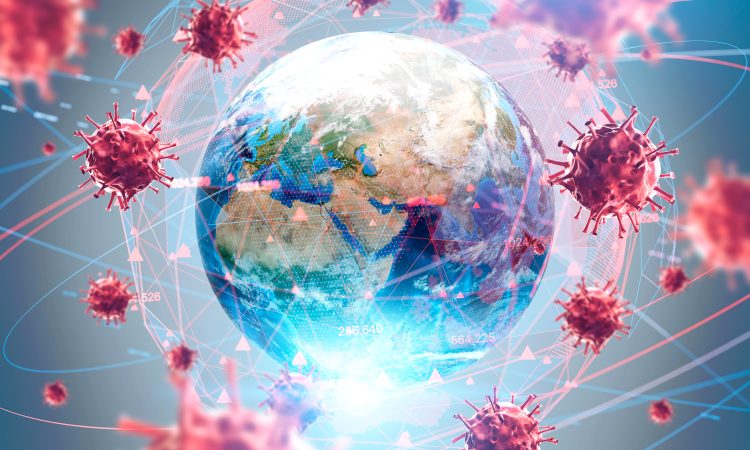Here is the 3rd article in the series written by Dr. Mathieu Millette, see the first two articles: My mother and SARS-COV-2 and An excellent virus.
The Star Wars theme song. It’s my phone ringing. I really like this saga. Panic! My stepfather just woke up with a temperature of 38.5 degrees Celsius. He’s having trouble breathing. At this time, with the COVID-19 pandemic raging everywhere, it is intuitive to think that he is affected. He is a 72 year old diabetic hypertensive man who has been on dialysis for 1.5 years. It is also very intuitive to think that the chances of him having complications, ending up in the hospital, on a respirator or even dying are very high. He’s has a jovial and flirtatious nature, an excellent storyteller who always has a hilarious joke in mind is now very anxious, stressed, defeated. My mother-in-law is in shock; they have always been together. Love at first sight in early adolescence, which then blossomed to shy and innocent dating. They got married 47 years ago. She thinks the worst; we always think of the worst-case scenarios. But what exactly happens when SARS-CoV-2 enters our body?
The viral journey
The viral journey begins when you go shopping, to the supermarket, to the pharmacy, or just for a healthy walk. An individual, not necessarily suspicious, coughs or sneezes while passing by you. According to Julian Tang (of the National University of Singapore), approximately 3000 microdroplets are then expelled very quickly. For the virus that causes seasonal flu, these droplets contain about 20,000 active viruses. For SARS-CoV-2, it is not yet known, but it is safe to assume that it will be the same thing. These droplets will land on your skin, in your nose, in your mouth. Viruses then attach themselves to the surface of cells that line the blood vessels, lungs, intestines, kidneys, and heart on the ACE2 receptor. In short, viruses have many gateways and potential target cells.
Each time a SARS-CoV-2 virus attaches to the surface of a target cell, it will inject its RNA (genetic material) in the same way as a syringe releases its drug. At that time, each infected cell makes new viruses, millions of new viruses that are released into the body and into the bloodstream. These new viruses invade and take over neighboring cells and the operation begins again. You can easily guess what happens when viruses get to the lung cells: they are completely destroyed. At this point, the organism attempts to respond.
The response
Infected cells, although under the control of viruses, warn their neighbors by releasing a chemical messenger called interferon. These molecules have an antiviral effect by reducing the entry of viruses and slowing the production of new viruses. In addition, interferon, or rather interferons, as there are several, warns the cells of the immune system that there is danger. The latter activates and attempts to destroy the invader. This is when fever and nasal secretions set in. You can have a sore throat, headache and soreness in all the muscles. If the viruses are in the lungs, pneumonia and difficulty breathing may develop. The immune system produces what is called in scientific jargon a storm of cytokines (other chemical messengers) and instead of promoting recovery, it creates a lot of inflammation. The situation is getting worse. See it a bit like the fighting scenes at the end of the Star Wars movies when the Resistance confronts the Empire: there are always a lot of spacecrafts, lasers cannon fires, missiles and explosions! The good guys always seem to be on the brink of giving in.
The rebellion
At the hospital, you will be given pain relievers to relieve pain and plenty of fluids to prevent dehydration. If the amount of oxygen in the blood decreases (hypoxia), you will be assisted by a respirator. This is when we pray, or rather we hope that the immune system takes over the virus, because otherwise it is death from respiratory failure, cessation of the functioning of many organs or sepsis (generalized infection by the virus that spreads throughout the body through the blood). Don’t worry, this is only a small percentage of people who will suffer from complications (for now, it’s around 5-10% in Quebec). Most people will only have mild to moderate flu symptoms and all of us will eventually develop immunity to the coronavirus.
The emperor
Emperor Palpatine, sworn enemy of the Jedis, was immortal, until Rey Skywalker finally settles this matter. It is in these times of COVID-19, of uncertainty, of disorganization, that we realize that we, the most normal humans; do not have eternity before us. Historians tell us of the deadly consequences of the last great pandemics with millions of deaths. So it’s okay to take a step back from our own lives. We meditate on our role on Earth, what we want to do with our lives, on the importance of our family and the people around us. That’s what I’ve been doing for two weeks. I know that I am not immortal. I know that my parents and parents-in-law are not immortal, I am not naive, but in my child’s heart I secretly hope for it every day.
Return to Earth
Finally, after several stressful hours in the hospital, my stepfather did not have COVID-19. Diagnosis: intestinal bacterial infection. Prescription: antibiotics 3 times a day for 10 days. Phew! It’s okay for now.
Do not miss the next articles in this series which will be posted in the coming weeks!
Mathieu Millette, Ph.D. Mcb.A. Doctor in microbiology and member of the Association of Microbiologists of Quebec






